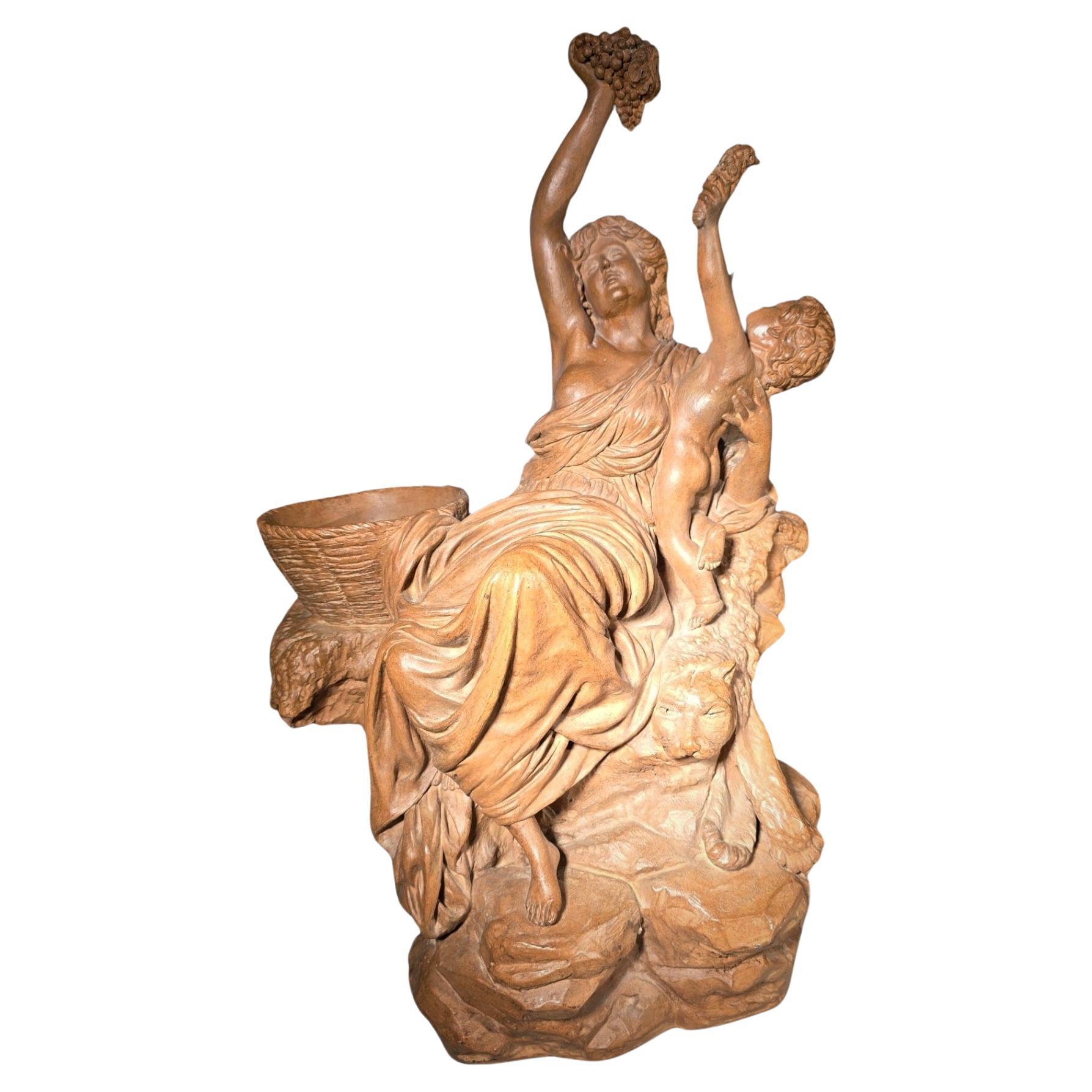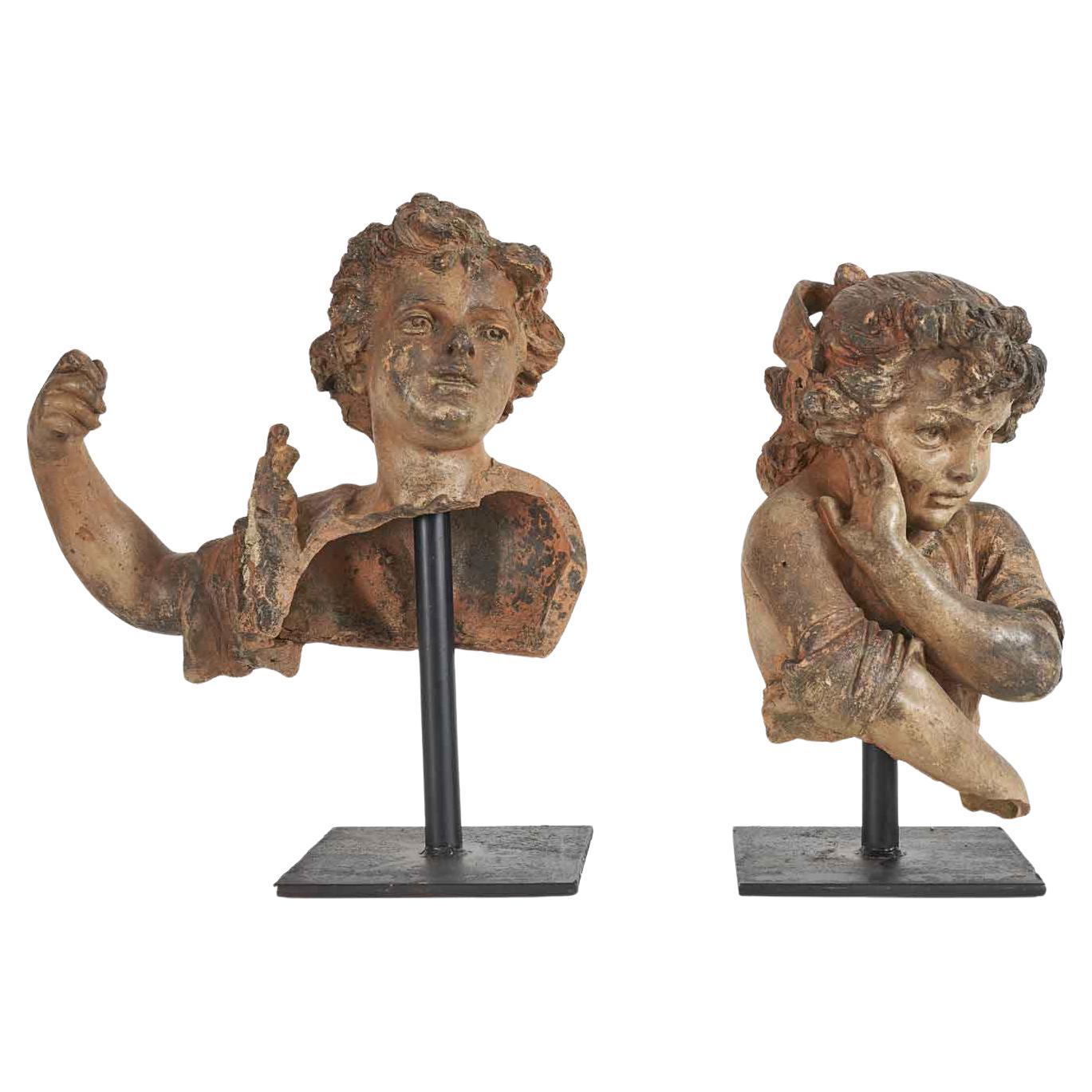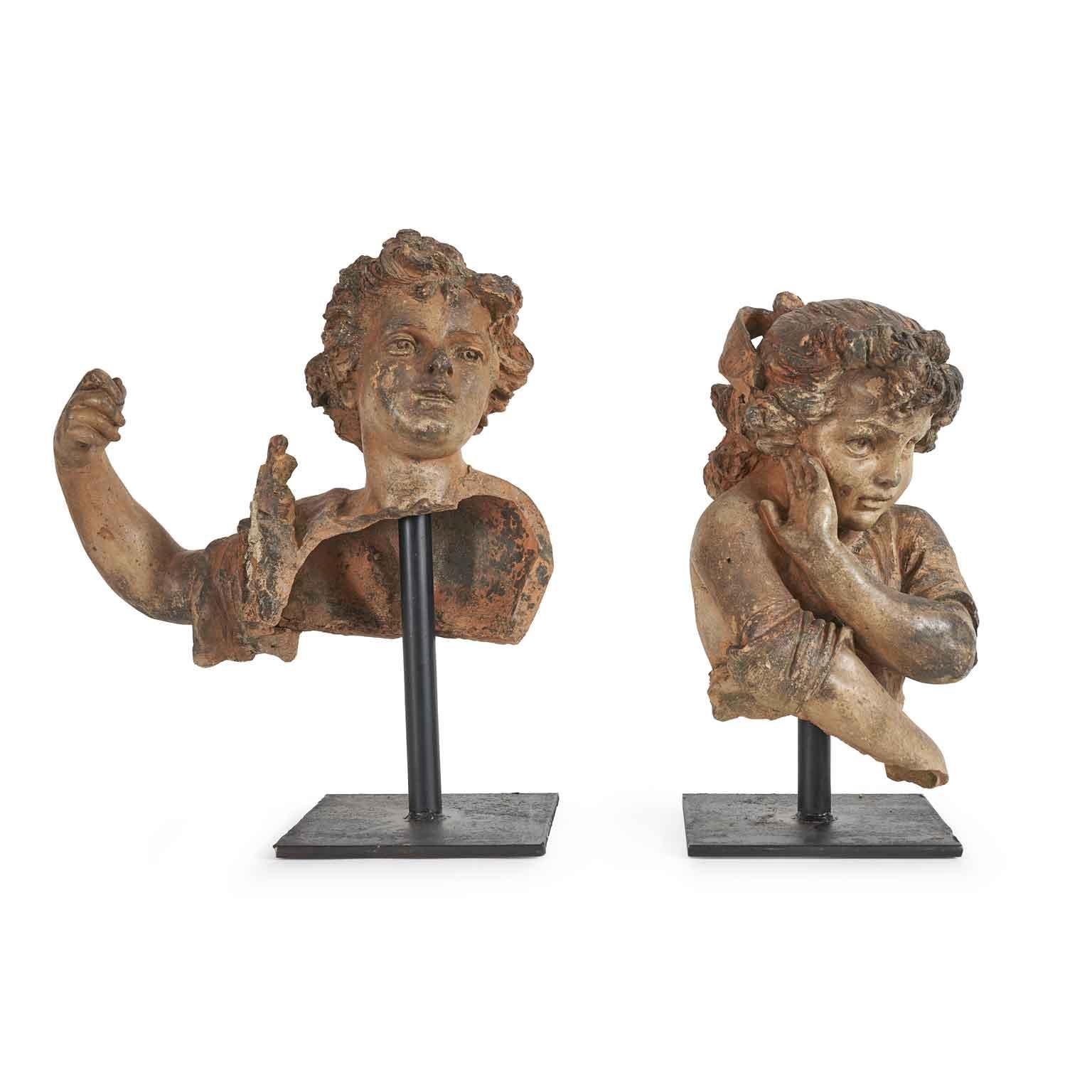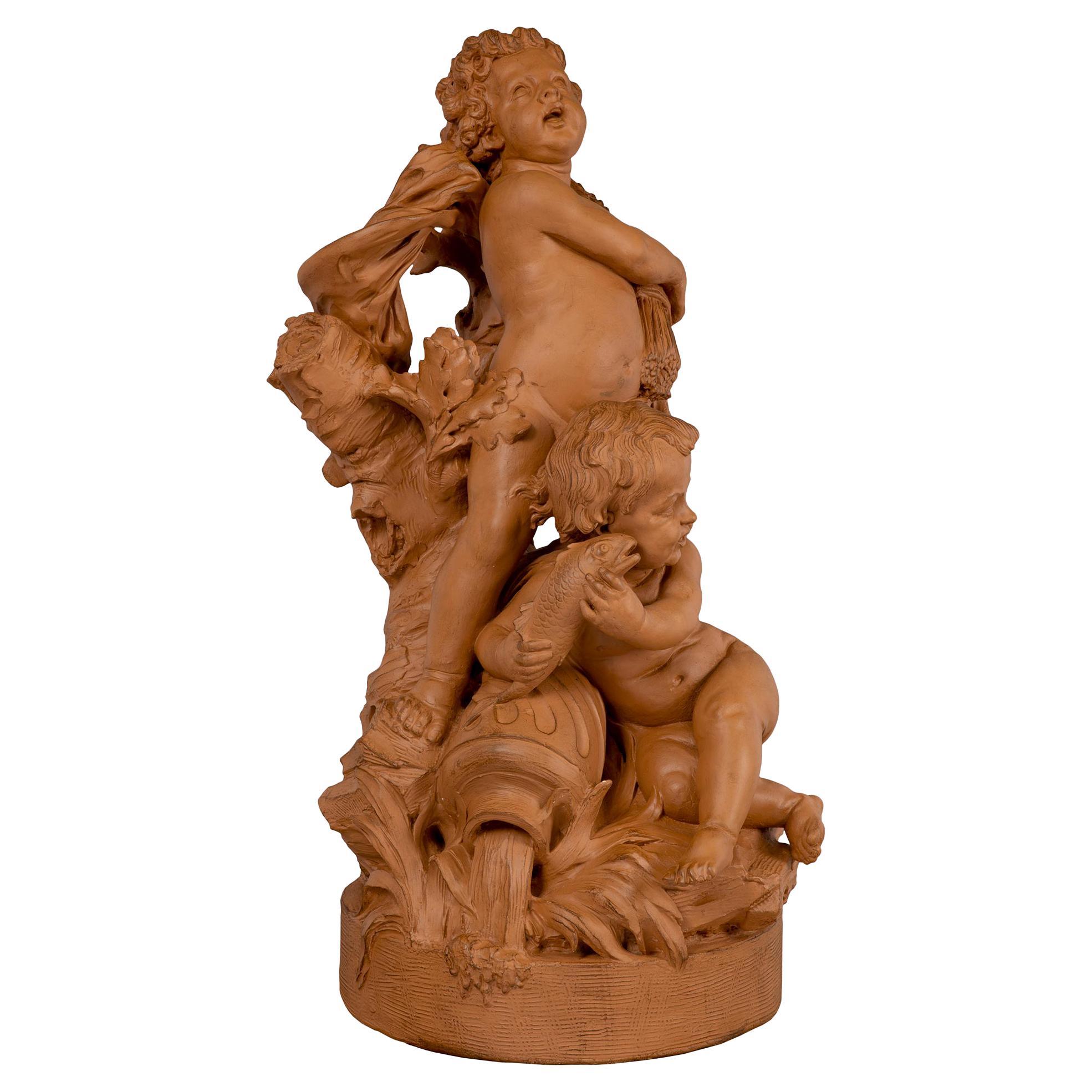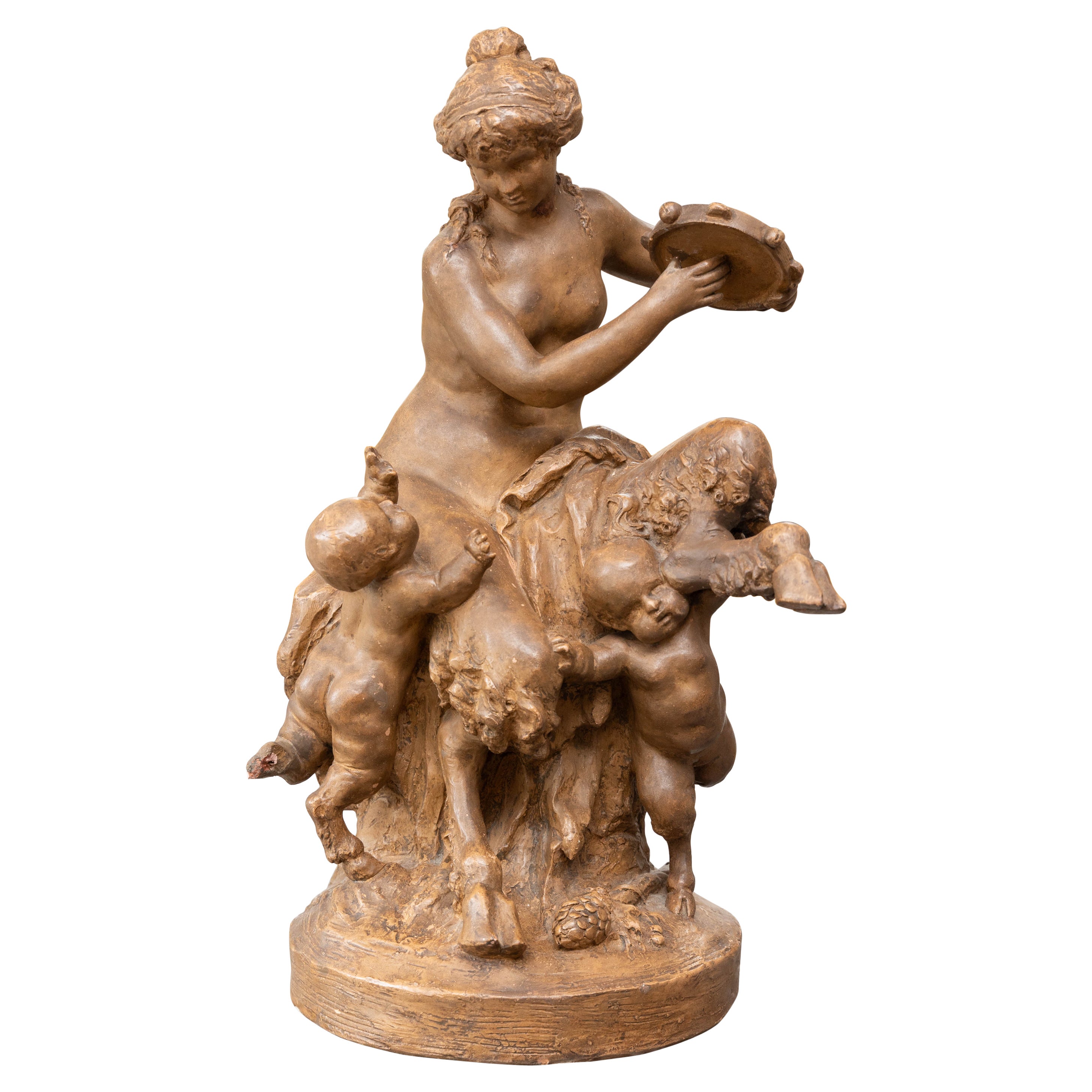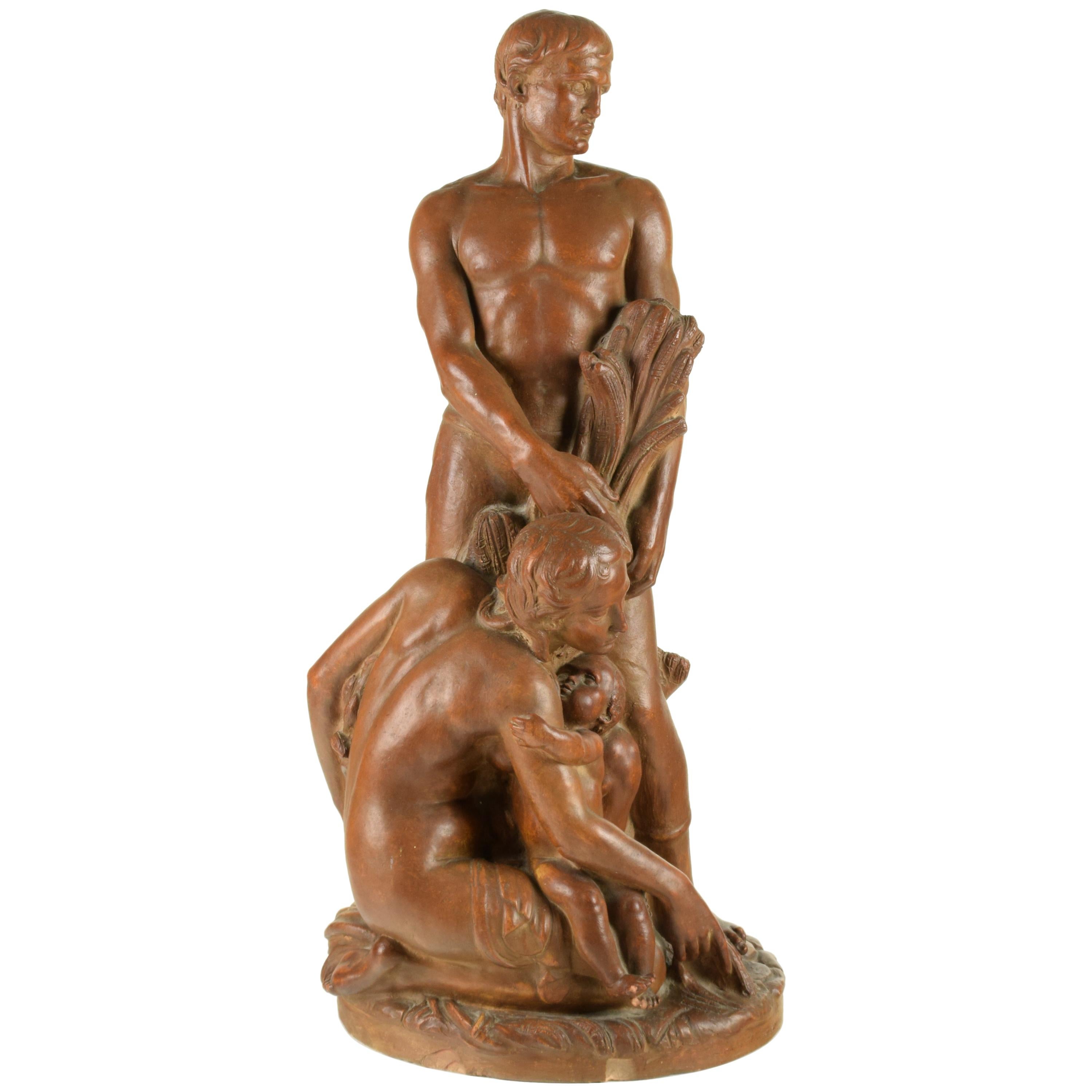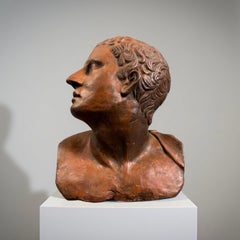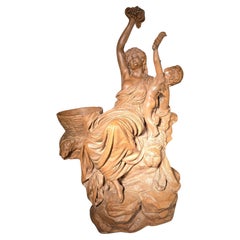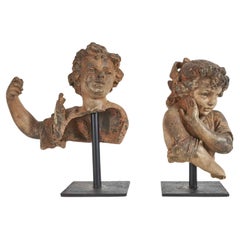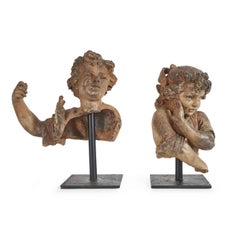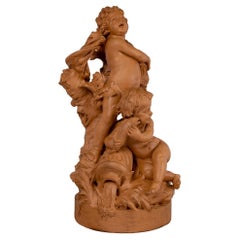Items Similar to French School of the 17th century Large Group in Terracotta
Want more images or videos?
Request additional images or videos from the seller
1 of 12
UnknownFrench School of the 17th century Large Group in Terracotta1680
1680
$5,353.14
£3,965.73
€4,500
CA$7,362.93
A$8,189.69
CHF 4,296.30
MX$99,932.84
NOK 53,924
SEK 50,816.83
DKK 34,262.41
About the Item
Large terracotta group depicting interior scene, northern France, second half of the 17th century.
The fine execution of this delightful family interior takes us back to the production of French earthenware partly influenced by the taste of Flanders. From Flanders we regain a taste for the popular scene, but the delicacy of the features, so far removed from the strong Flemish characterization, takes us back to France, near the city of Paris, where there were numerous kilns working with terracotta in the 17th century. century. The very clothes of the two figures are documented as the festive clothes of villagers who lived near the big city.
The woman, her thick curls partly hidden by her bonnet, sits slicing bread with a cat at her feet and a child grasping her arm; the man, at whose feet is the house dog, sits while mending his shoe.
Small gaps.
Measurements
Woman H 48 cm Base 33 x 20 cm
Man H 46 cm Base 30 x 26 cm
- Creation Year:1680
- Dimensions:Height: 18.9 in (48 cm)Width: 13 in (33 cm)Depth: 7.88 in (20 cm)
- Medium:
- Movement & Style:
- Period:Late 17th Century
- Condition:
- Gallery Location:Pistoia, IT
- Reference Number:1stDibs: LU2746214611712
About the Seller
4.5
Vetted Professional Seller
Every seller passes strict standards for authenticity and reliability
Established in 1997
1stDibs seller since 2024
16 sales on 1stDibs
- ShippingRetrieving quote...Shipping from: Pistoia, Italy
- Return Policy
Authenticity Guarantee
In the unlikely event there’s an issue with an item’s authenticity, contact us within 1 year for a full refund. DetailsMoney-Back Guarantee
If your item is not as described, is damaged in transit, or does not arrive, contact us within 7 days for a full refund. Details24-Hour Cancellation
You have a 24-hour grace period in which to reconsider your purchase, with no questions asked.Vetted Professional Sellers
Our world-class sellers must adhere to strict standards for service and quality, maintaining the integrity of our listings.Price-Match Guarantee
If you find that a seller listed the same item for a lower price elsewhere, we’ll match it.Trusted Global Delivery
Our best-in-class carrier network provides specialized shipping options worldwide, including custom delivery.More From This Seller
View AllTerracotta Bust Portrait of a Lady Italy 18th century
Located in Pistoia, IT
Terracotta bust, portrait of young lady, Italy, Tuscany, second half of the 18th century.
The bust, entirely hand-molded, depicts a young woman with an intricate hairstyle wearing ...
Category
Late 18th Century Italian School Figurative Sculptures
Materials
Terracotta
Large Art Nouveau Sculpture Terracotta Group "The Bacchante"
Located in Pistoia, IT
"The Bacchante," an imposing terracotta group bearing the signature of Domien van den Bossche. Late 19th century.
Probably inspired by Carrier Belleuse's "The Bacchante" group of ...
Category
Late 19th Century Art Nouveau Figurative Sculptures
Materials
Terracotta
Large French Art Nouveau Patinated Terracotta Sculpture Signed
Located in Pistoia, IT
Luca Madrassi (1848-1919), large patinated terracotta sculpture in Art Nouveau style, late 19th century. The sculpture depicts a half-naked young woman sitting in a tree holding a m...
Category
Late 19th Century Art Nouveau Figurative Sculptures
Materials
Terracotta
Neoclassical Terracotta Male Bust Italy 18th century
Located in Pistoia, IT
Molded terracotta male bust from the Neoclassical period, Italy, second half of the 18th century. AD monogram on the shoulder.
The bust, entirely hand-molded, is based on ancient ...
Category
Late 18th Century Italian School Figurative Sculptures
Materials
Terracotta
Altorilievo in Marmo della Montagnola Senese Profilo Siena XIV secolo
Located in Pistoia, IT
Altorilievo in marmo della Montagnola Senese raffigurante un profilo femminile a mezzo busto, Siena, XIV secolo.
L'altorilievo, nella tradizione senese del XIV secolo, si caratter...
Category
15th Century and Earlier Medieval Figurative Sculptures
Materials
Marble
Large Italian Neoclassical Marble Sculpture Allegory 18th century
Located in Pistoia, IT
Impressive neoclassical Carrara marble sculpture depicting the Allegory of Friendship and Loyalty, second half of the 18th century.
The sculpture depicts Friendship as a classical ...
Category
Late 18th Century Italian School Figurative Sculptures
Materials
Marble
You May Also Like
19th Century Italian Terracotta Sculpture
Located in Madrid, ES
This elegant 19th-century Italian terracotta sculpture is a remarkable work of art. Although the signature is illegible, it is authenticated and represents an allegory of autumn. The...
Category
Antique 1890s Figurative Sculptures
Materials
Terracotta
$1,817 Sale Price
20% Off
Pair Of Children Italian Terracotta Sculptures Late 1800s
Located in Milano, MI
Pair Of Terracotta Children Late 1800s fragments probably part of a larger sculptural group, perhaps a fountain. These are busts of a child with his arm raised and an intimidated lit...
Category
Antique Late 19th Century Italian Romantic Figurative Sculptures
Materials
Iron
Pair Of Terracotta Children Italian Romantic Busts Late 1800s
Located in Milano, IT
Pair of Fragments Of Late 1800s Romantic Sculptures, Pair of Terracotta Busts of Children probably part of a fountain, of a larger sculptural group. These are busts of a child with ...
Category
Late 19th Century Romantic Figurative Sculptures
Materials
Terracotta
French 18th Century Terra Cotta Statue from Paris
Located in West Palm Beach, FL
A striking and extremely charming French 18th century terra cotta statue from Paris. The high-quality statue is raised by a circular etched base. The base is decorated with a rocky t...
Category
Antique 18th Century French Figurative Sculptures
Materials
Terracotta
Terracotta Sculpture apres Clodion
By Claude Michel Clodion
Located in WEST PALM BEACH, FL
This is a lovely late 19th century French patinated terracotta figure of nude faun woman sitting on a rock with two putti, apres Clodion.
Category
Antique Late 19th Century French Other Figurative Sculptures
Materials
Terracotta
Emanuele Zambini Terracotta Sculpture
Located in Prato, IT
Firenze, Italy, 1942
In terracotta
Signed Emanuele Zambini
Measure: Height 61 cm.
Category
Vintage 1940s Italian Figurative Sculptures
Materials
Terracotta
